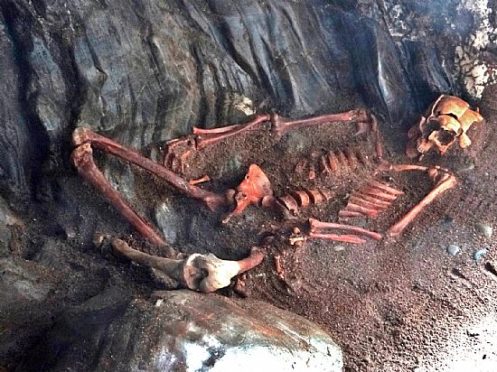Genetic analysis of “Rosemarkie man” who who died 1,400 years ago shows he was largely Orcadian.
Archaeologists found the man’s skeleton buried in a recess of a cave at Rosemarkie in the Black Isle.
In 2017, scientists made a facial reconstruction of the man during a forensic examination of his remains, which found he had severe injuries.
New genetic analysis has been undertaken on his skull at the University of Huddersfield. Scientists extracted his DNA and while work is ongoing, part of the findings has been published.
Writing on the Rosemarkie Caves Project website, Katharina Dulias, who was a postgraduate researcher at the time of the analysis, and Dr. Ceiridwen Edwards, senior research fellow, said they compared his DNA with a worldwide dataset of ancient and modern populations. “He is most similar to other Iron Age individuals from the Knowe of Skea, Orkney. Further more detailed analyses are on-going,” they wrote.
Previous analysis showed he had a high-protein diet suggesting he ate foods enjoyed by people of high status.
The Pict was discovered in a cross-legged position with stones weighing down his limbs while his head had been beaten multiple times.
It is believed he was a prominent member of the community, such as royalty or a chieftain.
The findings show he had a high-protein diet, which researchers have few other examples of during that period.
He stood at 5ft 6ins and was aged about 30 when he died.
